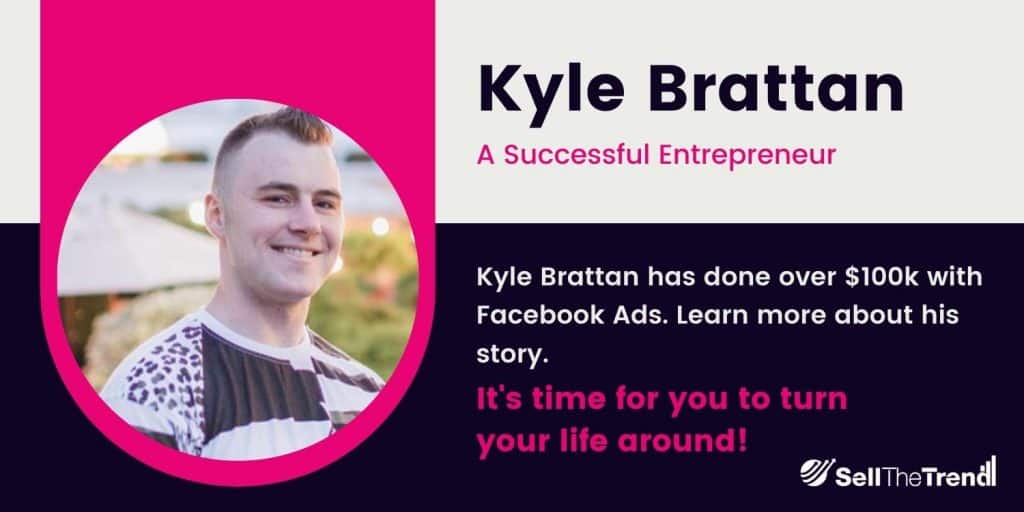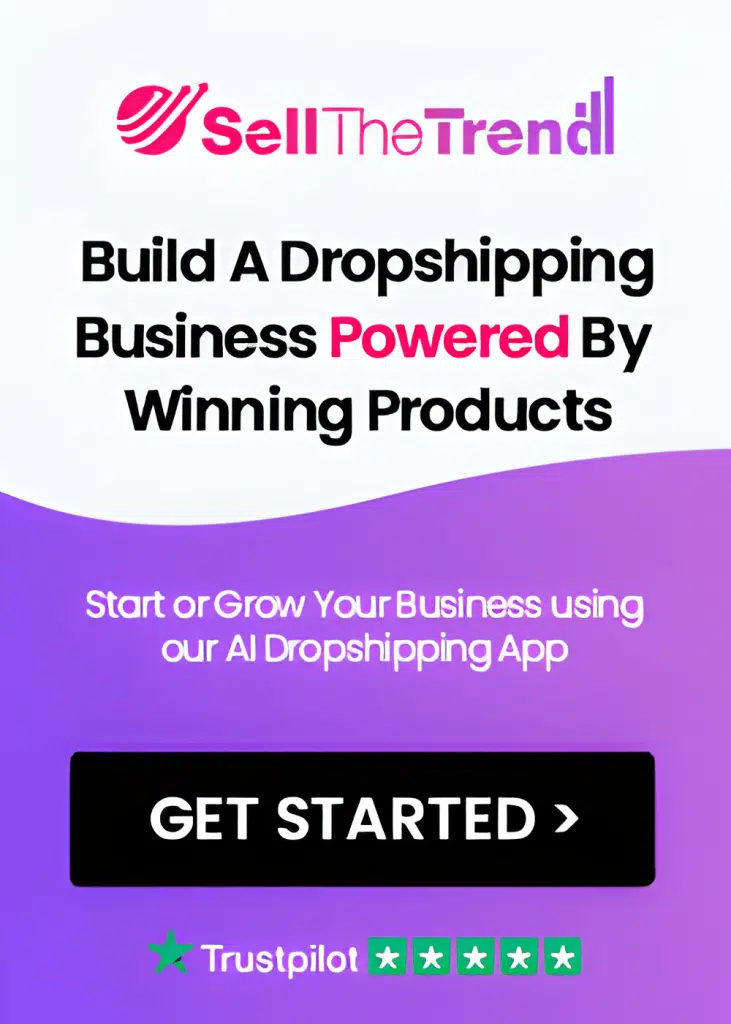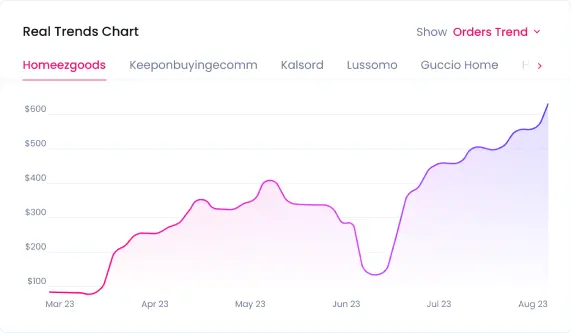How A Struggling Entrepreneur Did Over 100k In Dropshipping [Case Study]
Contents

Before Kyle finally turned his life around making 6-figures in dropshipping, there’s a huge list of his failures.
In this post, I will document the entire process of how and why Kyle stepped into the dropshipping business, the launch process, and his two cents about making $100k with Facebook Ads.
“I believe, almost everyone has it in them to become a successful entrepreneur. It’s just about a unique idea executed with the right strategies.”
Now, it might seem like he turned his life around within a few weeks, but it took him 4 years trying his luck in different businesses as an entrepreneur until he finally tried his luck in dropshipping.
Kyle used to work for a wholesale distributing firm selling different products. Though it was enough for him to pay the bills, he wasn’t even close to being independent and fulfilling his dreams.
Digital marketing was booming (still is) a few years ago and the long list of success stories, bloggers making a fortune, social media marketers making huge sales, and whatnot. This motivated him to some extent, and Kyle dabbled in SEO.
“After that, I dabbled in SEO”
SEO is a broad field and although it has the potential to make 6-figures, it didn’t quite hit him. He learned the basics, tried his luck, but the learning and implementing process didn’t align with his interests.
But that doesn’t mean SEO didn’t help. Kyle’s dropshipping strategies somewhat inherited the SEO techniques he learned earlier. Optimizing his store, product pages, ad campaigns, and other little things combined with his experience in SEO helped a lot.
Finally, Kyle started an e-commerce store in 2019 following e-commerce tutorials on YouTube, Instagram, and Facebook. Kyle self-learned a lot of spending on ad campaigns, trying different marketing strategies.
It’s safe to say that his first year in e-commerce was all learning and not making anything.
This demotivated him and now with a limited budget, Kyle decided to step into dropshipping.
The idea of selling products online without having to manage the inventory and order fulfillment caught his interest. And he had enough to spend on Facebook Ads.
This time, instead of learning in bits, he took a detailed dropshipping course and learned everything there is to know about dropshipping i.e. the benefits, risks, creating ad campaigns that convert, targeting the right audience, and whatsoever. There was no room for error now!
Now, let’s see what Kyle did next in his own words.
Keep following and learn more about how I chose my niche, finalized the products, which marketing techniques worked best for me, and how I utilized Facebook ads to make over $100k.
Let’s get started!
Choosing The Niche
Unlike what they (everyone on YouTube and most dropshipping courses) suggest, I let the market decide my niche for me.
Of course, before starting any business, you must decide what type of products you’re going to sell first.
Personally, this is the most important part for me because it’ll really tire me out if the niche I selected wasn’t profitable at all. Then all the effort and time invested in creating the store, testing ad campaigns, and product hunting will be for nothing. Here I’m talking about sleepless nights – 100s of hours.
At first, I get an idea from Google trends to verify and validate profitable niches.
Let’s take an example of the “bamboo” niche in GT:
You see, this niche has had a stable trend over the last 5 years. Once it’s validated, I can either create a micro-store selling a single product in the Bamboo niche or create a broad bamboo brand.
For example, selling “Bamboo seeds” just before the summer starts is a good idea. In fact, I’ve seen stores making a fortune out of this niche. This doesn’t end here, there is a whole lot of sub-niches including bamboo toothbrushes, bamboo kitchenware, and more. Getting the idea?
Most of the time, micro stores work better than macro stores. It enhances the store’s credibility and the audience’s trust.
Moreover, make sure the niche/products you select aren’t eatables. Also, ignore electronics and heavy goods, because in case of returns, you’ll bear the shipping costs.
Selecting low-priced items is the way to go. Profit margins are high in low-priced items and also, you wouldn’t have to worry about the returns. They’re easily dealt with.
Initial Investment
As I said earlier, when I first started dropshipping, I was nearly broke and didn’t have a lot to invest in this business. I think you can start a dropshipping business with as little as a thousand bucks. Well, I had a few thousand bucks at that time – that really helped me test different ad-sets and marketing techniques.
Your primary investment will be spent on Facebook Ads (if you follow my strategies).
The product selection, ad creation, and store creation is all your effort. But when it comes to bringing in sales, there’s where Facebook Ads shine.
In a nutshell, for aggressive marketing and fast results, I suggest you must have around $5000 to start.
Now, that’s not a rule, a dropshipping business can be successful irrespective of the initial investment, the main difference is the time it takes to start selling. The more capital you have to invest the larger your adset budgets can be and you can see faster results, though I have seen people start with as little as $500.
Product Research Tools
Sell The Trend is one of the first few dropshipping platforms I used to get started. What I liked about this app is that it gives you access to thousands of legit winning products which offloaded a lot of the time i spent searching and validating products – which is a very time consuming but critical part of my operation.
Their “NEXUS” Product explorer filters out hot products from millions of products on AliExpress, Shopify, Amazon and other marketplaces. Plus, I can always check if the supplier can ship directly from the US – cutting off the shipping duration which I prefer when I am targeting the US market. If I am targeting other markets, I make sure to confirm that the supplier will ship from other countries as well. I can do this from inside the app or I can contact the supplier directly if I want to be 100% certain that they will be able to ship locally.
Selecting The Products
After niche research, hunting trending products is certainly the most important part in the dropshipping business. You can try creating the best landing page, video ads, and Facebook ad campaigns, but if your product is not in demand, you’ll waste your money, time, and energy.
Here we’re talking about products that are yet to hit the market and if you’re able to hunt such products before the competitors do, you’re in the game to make 6-figures.
Now, sometimes I come across a winning product within minutes. At other times, I’ve spent and waited for weeks to find something that I believe would work.
For starters, I prefer products that are eye-catching, solve a particular problem, or have some feelings with the targeted audience. For instance, let’s take an example of this “Heart-shaped letter necklace” which I found on Sell The Trend.
Most people would be ordering this for their loved ones. The best thing is, this necklace costs less than a dollar and you can order this with any letter.
The selling price of this product is more than $16. That’s 16 times the product cost.
And just because it has feelings attached to the audience, people would be buying it for their loved ones. Plus, the product is extremely eye-catching.
I find it easy to quickly validate a product’s performance inside Sell The Trend’s product research popup. I can see right away that this product has an Excellent rating, but I can dive deep into the other data if I wish.
Also, make sure to not solely go for a product based on the “FEELINGS” as opposed to METRICS. Besides the people’s choice and feelings, I always have certain metrics in my mind before finalizing a product. What are those metrics? I like to look at orders, saturation, profit margin and the seasonality of the product if applicable. Don’t get sucked into the allure of low cost products if the profit margin is not there to allow you to be profitable.
Any product that I plan on putting on the store must meet certain metrics. The more you follow the rules, the more chances you have for a successful launch.
NO deviation, and strictness is key.
Moreover, I like to go for untapped products. For that, you can try finding the product on other Shopify Stores, Facebook, YouTube, Instagram or tiktok – whatever other social platforms you like. Determine the number of competitors, ad campaigns, pages promoting that product. Then I would validate what I find in Sell The Trend to make sure everything checks out.
A winning product with low competition is more likely to get more sales – achieving higher conversion rates. You get to set the selling price!
Targeting/Testing Strategies
I use Facebook Audience Insights’ target audience. The key is to try different ad sets. Write different ad copies, design unique ad flyers, videos, and other marketing material to promote your product.
The goal is to Create an Ad Campaign That Converts
When it comes to me, I use a 12-ad set testing strategy. The main goal is to test every angle of the market.
After creating 12 ad sets, I allocate $5 per ad set for like a week. I always launch at midnight and any ad set that gets a sale, I duplicate it 5 times.
After 7 days, I have the most converting ad sets and then I aggressively launch with the winning ad sets.
if you are not familiar with Facebook Audience Insights, or don’t want to do all the leg work, a quick hack is to use the built in audience suggestions inside Sell The Trend. I sometimes rely on this to help me with quick testing of different ad sets based on those audiences. Then i can quickly create products pages with pre-made product descriptions. Though this automatic page creation is a really great feature I recommend that you always tweak the description that the app shows you to make sure it’s perfect for your audience and represents the tone and style you are going after for your store.
Video Ads
I believe video ads can return handsome sales – if employed correctly. I often use BandOffAds video editing service. They offer one of the best video services for e-commerce businesses.
I use that service for more customized results, otherwise, most of the time, my primary video ad creation tools is Sell The Trend’s video creator.
I didn’t expect them to have this option when I first subscribed, but this feature saved me a lot of time and money on video editing. Like, you don’t have to be a professional video editor to create an ad that actually makes you money!
It comes included as part of the app and lets me create engaging video ads within minutes. The products are already available on the platform, and the images, music, and captions are pulled to make you a quick ad ready to use in your campaigns.
My Pricing Strategy
My pricing strategy is simple. It varies when I’m testing the product with different ad sets. However, I always try and undercut Amazon by 10%.
I’d keep less profit margin on some ad sets and make the price very low to gather the data (pixel) about the product.
Later, I keep increasing the price after a few days. Once I’m confident that this product can make sales at a particular profit margin, I’ll move the price back up.
Note that this is my own pricing strategy, and you can always make tweaks to what works best for you.
As a rule of thumb you see mentioned would be to prices products at 3 to 4 times the product cost. So if a product costs $5, then you want to be in the $20 range as far as price. Again there is no fast and hard rule, since as you can see for really low cost products like, the heart shaped necklace we discussed earlier, if the perceived value is there you can price the product at many times the cost. Again, you can decide the price!
Landing Pages & Themes
All my landing pages have a 3-set format. The product image, description, and customer testimonials are all set decently. It takes a moment for my audience to notice it all – enhancing the conversion rate.
I use the same format for all my landing pages – a sequence that is easy to understand and the audience consistently knows more about the product.
I do not care about branding my store until I’m done with finding a winning product. The Turbo theme by Out Of The Sandbox is my favorite and I always use it for my stores.
Product Photos & Descriptions
I already have this process automated with Sell The Trend’s product import feature. With the AliExpress integration, the product is added to my shop with one click.
I use the same product photos of the manufacturer/supplier. For descriptions, it is almost the same other than some tweaks to make it grammatically correct and sound good.
Yes, I have a copywriter that helps me write a copy for the store’s home page. An engaging copy certainly yields better results.
Apps That Helped Me Convert More
The best Apps that helped me make more money are the Upsell/quantity breaks app, customer reviews, and Sell The Trend automation (that I’ve already discussed).
Anyhow quantity breaks/upsell app help a lot in raising the average order value overnight. Without any developer or designer, I can increase the AOV with pre & post-purchase upselling, and built-in split testing.
I keep track of the leads and sales with accurate data and tracking. It saves a lot of time and energy.
Most of the time, I end up selling 2+ units that make my AOV sometimes 100+.
Moreover, I also use customer reviews app for all my photo reviews. Having beautiful customer testimonials on the product pages really helps. Sell The Trend has integrated their own shopify app photo reviews app into their stores, which you can use to streamline the entire review import process and save some money.
Photo reviews really stand out and help in boosting sales with social proof.
After I’m All Set – Now’s the Time to Make Money
The whole point of this whole story, my marketing techniques, was to determine how to make the most money out of dropshipping.
Well, after I’m done selecting a niche, finding a winning product, testing ad copies, creating video ads, and everything else, I’m set to take out my profit – a lot of it.
You’ve to be smart here because I’ve seen a lot of people doing a great job but after the ad costs, product costs, apps costs, and other overheads, their TAKE HOME pay is very low.
That’s why I always choose a product and set my ad campaigns such that I make at least $30 profit.
Let’s say a product costs $8.5 with shipping, then my selling price would be around $45. With an AOV of $60, I make around $50 per sale.
You have to think twice before setting your final order price. This part comes in the end when you’ve determined the best ad sets, branded your store, and set out to make money.
Focus On More Important Things
When I started dropshipping, my main focus was always on improving my marketing strategies. After the niche selection, products selection, and store creation, I spent most of my time A/B testing different marketing tactics, Facebook ad sets, and whatsoever.
I have seen people worrying 90% of the time fulfilling orders themselves, focusing on landing pages, and spending hours solving suppliers’ issues. They pay so much less attention to marketing and ads.
This is where platforms like Sell The Trend helped me. 90% of my workload is automated including order fulfillment, audience building, video ad creation, and product selection.
I use the same theme, use Sell The Trend to create some awesome landing pages (similar landing pages for most of my stores), some key apps to increase AOV and automate most of the process to focus on more important things – that actually makes me money.
My Two Cents
Make sure not to violate any Facebook Policies. I’ve gotten my business ended before and Facebook keep causing issues for dropshippers.
Moreover, another challenge I faced was the Facebook page feedback score. It’s like a credit score for Facebook pages. You can’t remove customer’s feedback so be cautious.
Also, once you find your winning product, make sure to order it from at least 2-3 suppliers and check their shipping times. You wouldn’t want to work with a non-reliable supplier and have your customers wait for their order, would you?
What Am I Doing Now?
I’m still dropshipping and for certain stores selling them on Flippa. For now, my goal is to have at least 5 successful e-commerce brands.
Make sure to keep yourself updated with the dropshipping business model. Strategies that work in 2021 well may not yield the same results in 2022.
Keep evolving… keep making money… keep it simple!









